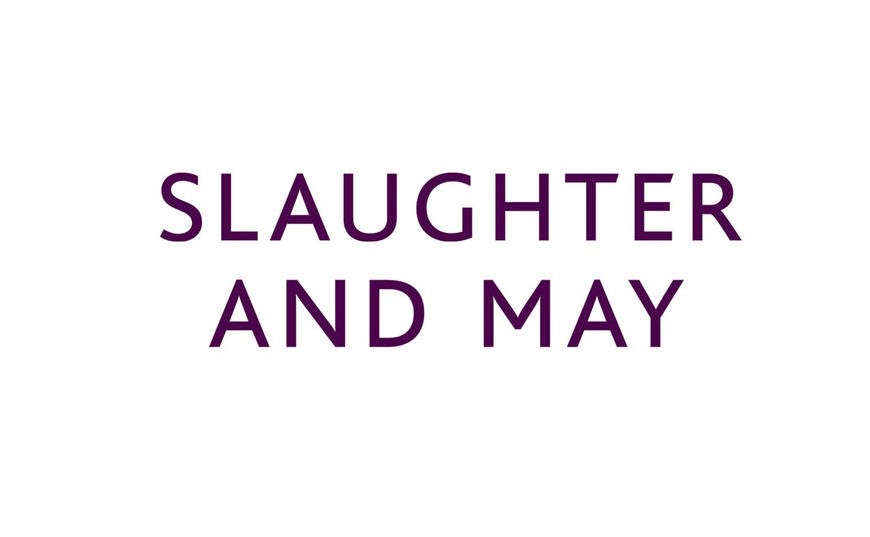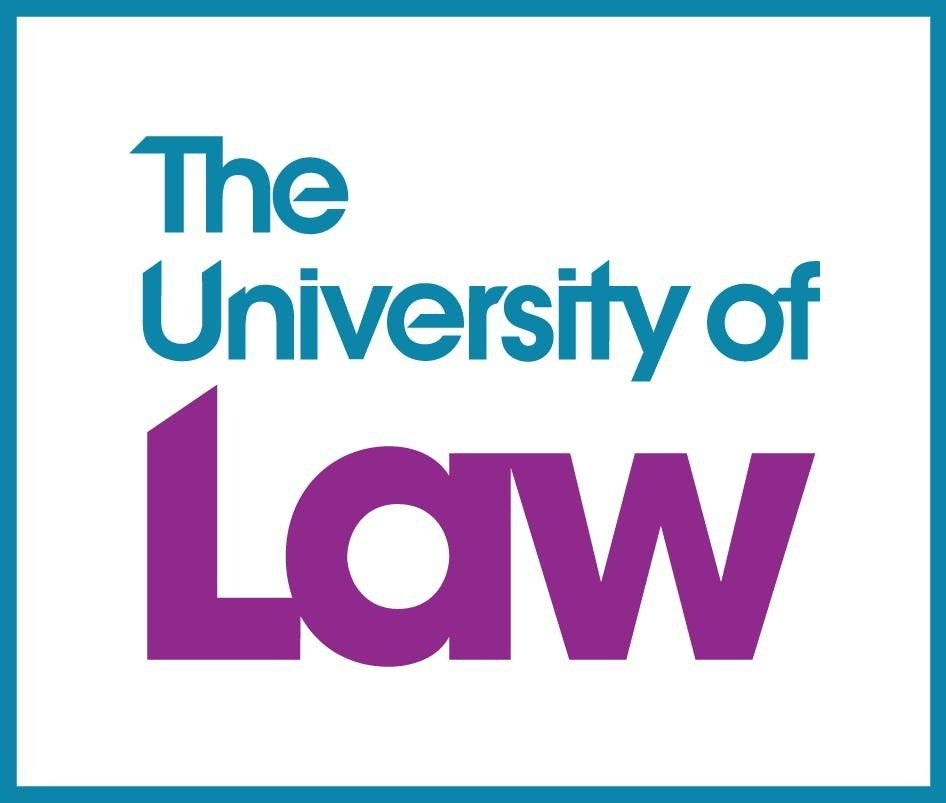As Brexit has evolved from an idea to a movement, its status to the people of the United Kingdom and other European Union Member States is no longer one of a looming threat, but an immediate danger. Though the impacts of this movement on citizens of the UK itself have been made abundantly clear, the effect on migrants in the UK and the people of other EU nations has been silently ignored. Brexit was posed as a movement that would improve the lives of the British people: Leave voters, on average, based their decisions largely on identity (with those identifying more closely with English as opposed to British choosing to vote Leave).1 Yet, it seems to have presented more challenges - such as social exclusion - than opportunities, with migrant women across the UK, such as those identified in Duda-Mikulin’s book on Polish women in the UK, questioning their inclusion in British identity.2
Throughout, this article will be exploring the effects of Brexit on both local and migrant women living in the UK. In an attempt to uncover why women’s position in society has been threatened since the United Kingdom’s withdrawal from the European Union, this article adopts a feminist perspective that aims to explain why Brexit (in terms of the campaign, vote outcome, and resultant Acts and proposed Bills); alongside other world events, has led to insecurity in UK women’s status.
Brexit is not inherently a sexist movement— rather, it is argued by many to be intrinsically xenophobic as, during the Leave campaign, parties such as UKIP preached the idea that immigration in the UK ‘is out of control’.3 Because of the popularity of UKIP’s anti-immigration approach to the UK’s involvement in the EU, it became clear from the outcome of the vote and subsequent analyses that views on immigration control had the greatest influence over Brexit support.4 The animosity that arose from this political movement caused fear in many migrants living in the UK, particularly in migrant women, who were already facing the difficulties of the dual burden. A term developed by Ann Oakley, a ‘dual burden’ refers to the way in which, despite women’s inclusion in the public sphere, they remain heavily burdened with housework and caring responsibilities.5 For many migrant women, this means that they have adopted ‘double caring responsibilities’, where they retain commitments back home and have new caring responsibilities in their current location.6 Therefore, when the result of the Brexit vote confirmed the success of the leave campaign’s approach (Brexit won with a 51.9% vote majority)7 migrant women across the UK, who were facing fears over their future social and legal rights as migrants, began to question their involvement in British life.8
Moreover, migrant women are more likely than migrant men to be subject to exploitation within the labour market.9 As a result, the combination of women’s typical social and employment roles means that they are immediately presented with an abundance of risk and instability. Although the EU is constantly updating their legislation to improve the standard of living for carers, for example the right to maternity leave under Directive 92/8510 and the right to carers leave under Directive 2019/115811, the UK’s exit from the EU made their participation in this legislation uncertain. Before the enactment of the Withdrawal Agreement in 2020, migrant women’s futures in the UK were unstable - as Brexit caused insecurity in the UK, EU law adoption on caring responsibilities was unlikely to be the dominating task for the government.12
The true implications of the handling of Brexit can be seen in Duda-Mikulin’s book on Polish women living in the UK, where women such as Ksenia worried about her family’s future in the UK.13 These worries are not confined to Ksenia: many migrant women decided to move back to Poland, such as Kornelia’s friends, as a result of the uncertainties outlined previously that were threatening those living in the UK.14 The immediacy of the impacts of this rising instability, where women were questioning their role in British society, is clear through the increased emigration and decreased immigration of EU citizens to and from the UK: in the November 2017 immigration report, it was stated that ‘EU net migration is the lowest since YE June 2013’15, demonstrating the impacts of Brexit’s precarity on EU migrant involvement in British living.
This precarity, although it should have been diluted by the consolidation of new legislation which would increase stability in UK law, was not this simple to remove. The Withdrawal Agreement of 2020, while in many aspects successful in lightening the severity of the issues that faced EU migrants post-Brexit (such as the provisions of Articles 13 through 17, which outline residency rights of migrants, including permanent residency in Article 15 and rights to entry and exit in Article 14), was also unsuccessful in many ways.16 The main way in which it can be seen to have unsettled the nation further was the significant time that this Agreement took to come into force - it was not enacted until four years after the initial Brexit vote.17 Because stable UK legislation was so slow to be implemented, this gave way to plenty of time for worries and anxieties to manifest themselves.
As a result, from Duda-Mikulin’s and Dustin, Ferreira and Milln’s books on the precarity of women in a post-Brexit UK society, as well as legislation regarding the withdrawal of the UK from the EU, it can be seen that, before the UK even left the EU, migrant women were the subject of Brexit’s unpredictability and anxiety. But why were migrant women still the victim after the Withdrawal Agreement was enacted?
As seen throughout, the hesitation with enacting legislation and the instability of UK law after the Brexit vote seems to be one of the largest contributors to women’s insecurities. However, even after the enactment of the important legislation into UK law, women’s position as a victim of Brexit remained unchanged. As mentioned previously, the withdrawal of the UK from the EU presented less troubles with EU law adoption than was first anticipated: under the European Union (Withdrawal) Act 2018 (EUWA 2018), retained EU law was created whereby, under s 7, the majority of EU law and legislation enacted before the end of the transition period ‘continues to be domestic law’.18 However, the UK is not obligated (although permitted) to adopt any EU law into domestic law made after the end of the transition period under s 19 of the EUWA.19 This aspect of UK law post-Brexit is key to understanding women’s precarity; EU law, as highlighted above, often adapts its rules and strategies to improve the standard of living of women and increase gender equality. For example, in 2020, the EU initiated its Gender Equality Strategy 2020-25.20 As an EU strategy that was implemented after the withdrawal of the UK from the EU, the UK is not obligated to adopt this strategy under the EUWA 201821- and it has not.
Although the UK government has implemented other gender equality actions, such as the launch of a fund in May 2022 ‘to support women’s reproductive wellbeing in the workplace’, other attempts at change have been less successful.22 This includes the attempts to reduce violence against women in response to the murder of Sarah Everard in 2021, with people such as the founder of Reclaim These Streets, arguing that the strategy “fails to engage with the scale of the problem facing women”.23 For example, the £3 million that the government allocated to educating the police force on male violence is miniscule in comparison to the £45 million given to the Safer Streets Fund, with strategies focusing on surface-level crime prevention rather than addressing the roots of the issue at hand.24 Furthered by Labour MP Jess Phillips, the government’s focus is on a “system that relied on the interruption of the victim”, ignoring prevention techniques such as education.25 Therefore, it is no wonder that women continue to feel so unsafe in this country. Because the UK is no longer obligated to adopt any new EU law that centralises improving the lives of women, it is no longer bound by a higher authority— the UK has almost complete authority to choose which laws it passes and which strategies it adopts, a concept that is frightening to already vulnerable social groups.
The proposal of the Bill of Rights in 2022 further emphasised the threat to women’s position in society. As an attempt to rework the Human Rights Act 1998 (HRA 1998) while remaining consistent with the Convention rights, the Bill of Rights proposed a number of controversial issues that opposed those gender equality rights outlined in the HRA 1998, the most notable being the matter of abortion rights.26 Abortion was not included as a right in this Bill - Raab (now former Deputy Prime Minister) argued it was “settled in UK law”.27 Under the Abortion Act 1967, abortion is not described as a right but an allowance, where abortion is only legal if it is terminated under medical opinion.28 Although this Bill was eventually quashed on 27 June 202329 as a result of its controversy, the fact that it was even considered From the points raised throughout this article, it is clear that women’s rights have been significantly threatened since the Brexit vote of 2016. Despite the introduction of retained EU Law under the EUWA 2018, EU strategies and legislation introduced post-transition period (after 31st January 202030) are not obligated to be introduced into UK law,31 and the UK government has taken full advantage of this fact. The uncertainty that arose from the Brexit referendum, in terms of both migration status and the position of women in a future UK society impact not only local women but also migrant women living in the UK, many of whom were pressured to move back to their country of origin, or prevented from migrating to the UK in the first place, as a result of fear for their role in present UK society.32
These are only a few of the issues presented to women (both migrant and local) as a direct consequence of the UK’s withdrawal from the EU. An already vulnerable social group, women’s status is becoming increasingly precarious. Alongside other global events, such as the overturning of Roe v Wade33in 2022 that removed the obligation to the right to abortion34, as well as the attacks on women’s rights in Afghanistan and Iran in 202135 and 202236 respectively, fear is rising in women in the UK as their rights are not concrete in UK law post-Brexit. The attack on women is becoming an increasingly present threat in the UK. As the leading party continues to ignore the very prominent issues facing women, it becomes commonplace to condone misogynistic ideologies and behaviours, slowly reversing all that has been accomplished since the 19th century.
References
[1] John Curtice, ‘The Vote to Leave the EU’ (British Social Attitudes, no date) 34. <https://bsa.natcen.ac.uk/media/39149/bsa34_brexit_final.pdf> accessed 29 October 2023
[2] Eva A. Duda-Mikulin, EU Migrant Workers, Brexit and Precarity: Polish Women’s Perspectives from Inside the UK (Online edn, Policy Press Scholarship Online, 2019) 83.
[3] Ben Walker, ‘Policy: Immigration’ (UK Independence Party, 2023)<https://www.ukip.org/ukip-policies/policy-immigration> accessed 28 October 2023
[4] Matthew Goodwin and Caitlin Milazzo, ‘Taking Back Control? Investigating the Role of Immigration in the 2016 Vote for Brexit’ (2017) 19(3) BJPIR.<https://journals.sagepub.com/doi/full/10.1177/1369148117710799> accessed 28 October 2023
[5] Ann Oakley, The Sociology of Housework (Roberston, 1974) 27.
[6] Dr Louise Ryan and others, ‘Family Strategies and Transnational Migration: Recent Polish Migrants in London’ (2008) 35(1) Journal of Ethnic and Migration Studies.<https://www-tandfonline-com.libproxy.york.ac.uk/doi/full/10.1080/13691830802489176> accessed 29 October 2023
[7] The Electoral Commission, ‘Report: 23 June 2016 referendum on the UK’s membership of the European Union’ (The Electoral Commission, 29 July 2022).<https://www.electoralcommission.org.uk/who-we-are-and-what-we-do/elections-and-referendums/ou r-reports-and-data-past-elections-and-referendums/report-23-june-2016-referendum-uks-membership european-union> accessed 29 October 2022
[8] Duda-Mikulin (n 2).
[9] Hein de Haas, Stephen Castles and Mark J. Miller, The Age of Migration: International Population Movements in the Modern World (Bloomsbury Publishing Plc 2019) 289.
[10] Council Directive 92/85/EEC of 19 October 1992 on the introduction of measures to encourage improvements in the safety and health at work of pregnant workers and workers who have recently given birth or are breastfeeding (tenth individual Directive within the meaning of Article 16 (1) of Directive 89/391/EEC) [1992] OJ L348/1.
[11] Directive (EU) 2019/1158 of the European Parliament and of the Council of 20 June 2019 on work-life balance for parents and carers and repealing Council Directive 2010/18/EU [2019] OJ L188/79
[12] Moira Dustin, Nuno Ferreira and Susan Millns, Gender and Queer Perspectives on Brexit (1st edn, Springer International Publishing AG 2019) 75.
[13] Duda-Mikulin (n 2)
[14] ibid.
[15] Office for National Statistics, ‘Migration Statistics Quarterly Report: November 2017’ (ONS, 30th November 2017)<https://www.ons.gov.uk/peoplepopulationandcommunity/populationandmigration/internationalmigra tion/bulletins/migrationstatisticsquarterlyreport/november2017> accessed 1 November 2023
[16] Agreement on the withdrawal of the United Kingdom of Great Britain and Northern Ireland from the European Union and the European Atomic Energy Community 2020.
[17] ibid.
[18] European Union (Withdrawal) Act 2018 s 7.
[19] EUWA 2018 s 19.
[20] Commission, ‘A Union of Equality: Gender Equality Strategy 2020-2025’ COM (2020) 152 final.
[21] EUWA 2018 s 19.
[22] Eren Waitzman, ‘Status of Women and Girls in the UK Since 2010’ (2022) House of Lords Library section 2.2 <https://lordslibrary.parliament.uk/status-of-women-and-girls-in-the-uk-since-2010/#heading-4> accessed 19 November 2023.
[23] ibid, section 4.3.
[24] ibid.
[25] Jessica Murray, ‘Government Failing to Tackle Violence Against Women, says Jess Phillips’ (The Guardian, 28 December 2021) <https://www.theguardian.com/society/2021/dec/28/government-failing-violence-against-women-jess phillips> accessed 19 November 2023.
[26] Bill of Rights Bill HC Bill (2022-23) [1].
[27] Jessica Elgot, ‘Dominic Raab Says Right to Abortion Does Not Need to be in Bill of Rights’ (The Guardian, 29 June 2022)
<https://www.theguardian.com/politics/2022/jun/29/dominic-raab-says-right-to-abortion-does-not-nee d-to-be-in-bill-of-rights> accessed 2 November 2023.
[28] Abortion Act 1967 s 1.
[29] Bill of Rights Bill HC Bill (2022-23) [1]
[30] Agreement on the withdrawal of the United Kingdom of Great Britain and Northern Ireland from the European Union and the European Atomic Energy Community 2020.
[31] EUWA 2018 s 19.
[32] Duda-Mikulin (n 2).
[33] (1973) 410 U.S. 113.
[34] BBC News,‘Roe v Wade: What is US Supreme Court Ruling on Abortion?’ (BBC, 24 June 2022) <https://www.bbc.co.uk/news/world-us-canada-54513499> accessed 2 November 2023
[35] Amnesty International, ‘Afghanistan 2022’ (Amnesty International, 2023) <https://www.amnesty.org/en/location/asia-and-the-pacific/south-asia/afghanistan/report-afghanistan/ > accessed 2 November 2023
[36] Amnesty International, ‘Iran 2022’ (Amnesty International, 2023 <https://www.amnesty.org/en/location/middle-east-and-north-africa/iran/report-iran/> accessed 2 November 2023
Bibliography
Legislation
UK
Abortion Act 1967 s 1
Agreement on the withdrawal of the United Kingdom of Great Britain and Northern Ireland from the European Union and the European Atomic Energy Community 2020
Bill of Rights Bill HC Bill (2022-23) [1]
European Union (Withdrawal) Act 2018
EU
Commission, ‘A Union of Equality: Gender Equality Strategy 2020-2025’ COM (2020) 152 final Council Directive 92/85/EEC of 19 October 1992 on the introduction of measures to encourage improvements in the safety and health at work of pregnant workers and workers who have recently given birth or are breastfeeding (tenth individual Directive within the meaning of Article 16 (1) of Directive 89/391/EEC) [1992] OJ L348/1
Directive (EU) 2019/1158 of the European Parliament and of the Council of 20 June 2019 on work-life balance for parents and carers and repealing Council Directive 2010/18/EU [2019] OJ L188/79
Cases
Roe v Wade (1973) 410 U.S. 113
Secondary Sources
Books
Duda-Mikulin E A, EU Migrant Workers, Brexit and Precarity: Polish Women’s Perspectives from inside the UK (Online edn, Policy Press Scholarship Online, 2019) ch 5, 83
Dustin M, Ferreira N and Millns S, Gender and Queer Perspectives on Brexit (1st edn, Springer International Publishing AG 2019) 75
Haas H, Castles C and Miller M J, The Age of Migration: International Population Movements in the Modern World (Bloomsbury Publishing Plc 2019) 289
Oakley A, The Sociology of Housework (Roberston, 1974) ch 2, 27
Journal Articles
Goodwin M and Milazzo C, ‘Taking back control? Investigating the role of immigration in the 2016 vote for Brexit’ (2017) 19(3) BJPIR
Ryan L and others, ‘Family Strategies and Transnational Migration: Recent Polish Migrants in London’ (2008) 35(1) Journal of Ethnic and Migration Studies.
Websites
Amnesty International, ‘Afghanistan 2022’ (Amnesty International, 2023)
– – ‘Iran 2022’ (Amnesty International, 2023)
BBC News, ‘Roe v Wade: What is US Supreme Court Ruling on Abortion?’ BBC, 24th June 2022). Elgot J, ‘Dominic Raab Says Right to Abortion Does Not Need to be in Bill of Rights’, (The Guardian, 29th June 2022).
Murray J, ‘Government Failing to Tackle Violence Against Women, Says Jess Phillips’ (The Guardian, 28 December 2021)
Walker B, ‘Policy: Immigration’ (UK Independence Party, 2023).

















